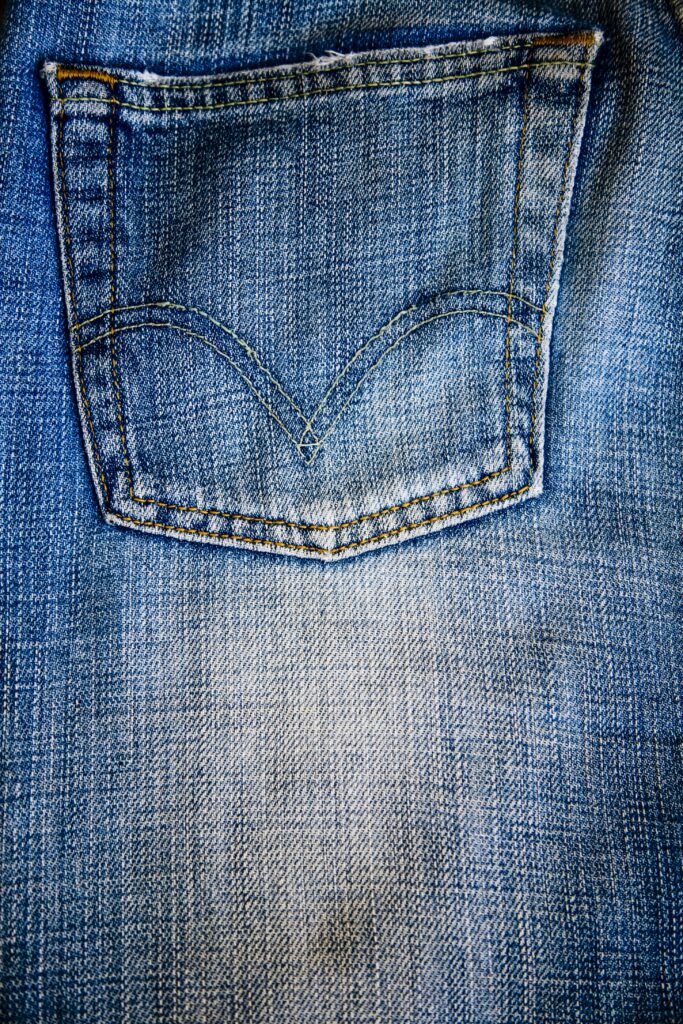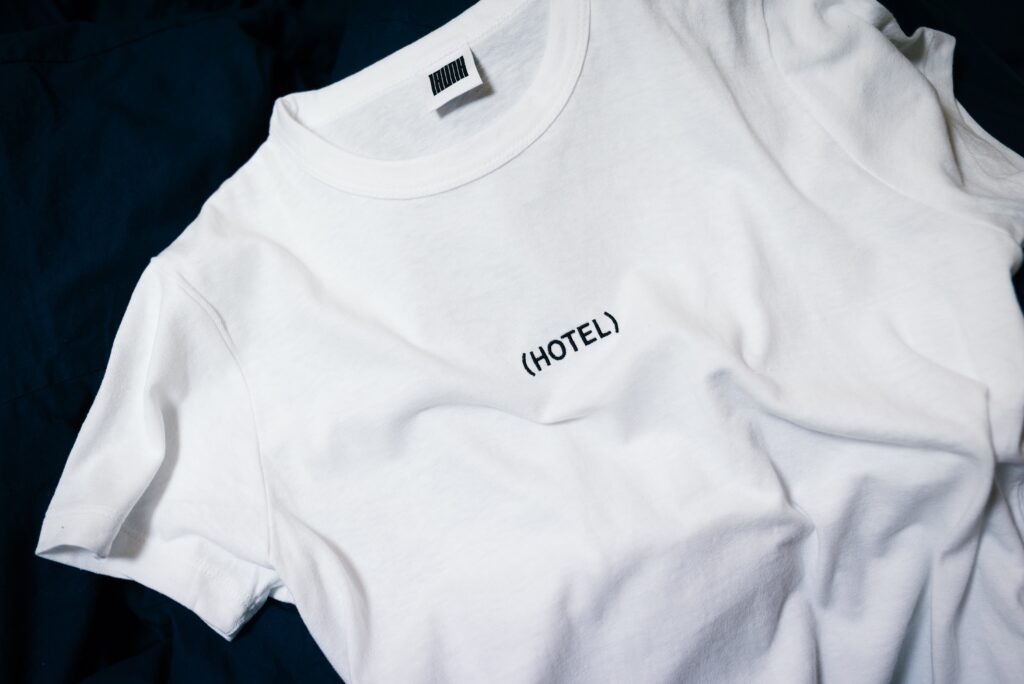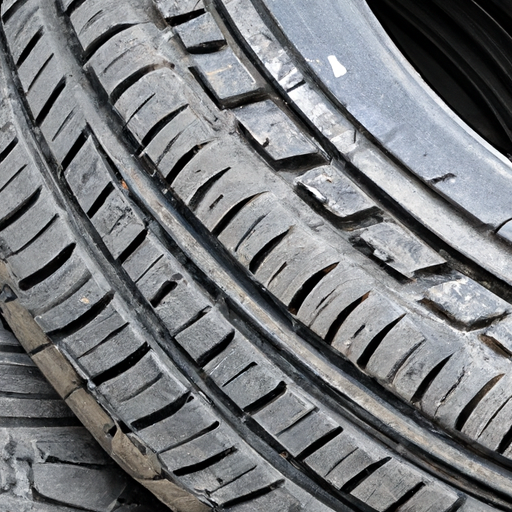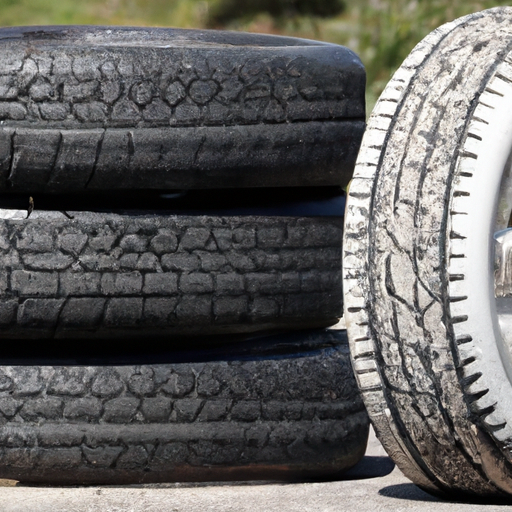Have you ever noticed that your car’s tires seem to be wearing down in a strange and uneven pattern? It’s important to pay attention to this issue, as it could indicate a potential problem with your vehicle’s alignment or suspension. Uneven tire wear can cause decreased traction, poor handling, and even increased risk of a blowout. In this article, we’ll explore the common signs of uneven tire wear and discuss what you can do to prevent it from happening again in the future.

Types of Uneven Tire Wear
Uneven tire wear can occur for a variety of reasons, and understanding the different types of wear can help you identify and address any issues with your tires. Here are the most common types of uneven tire wear you may encounter:
Cupping
Cupping, also known as scalloping or dipping, is a type of uneven tire wear that appears as small, cup-shaped indentations or scallops on the tire’s surface. It is typically caused by suspension issues, such as worn shocks or struts. Cupping can also be the result of imbalanced or misaligned tires.
Feathering
Feathering refers to the diagonal wear pattern on a tire, where the edge of the tread blocks on one side of the tire is smoother and rounded, while the other side is sharper. This type of uneven wear is often caused by improper toe alignment, which means that the tires are pointing slightly inward or outward.
Flat Spots
Flat spots occur when a portion of the tire’s tread loses its round shape and becomes flat, resulting in a uneven surface. This can happen when a vehicle skids or when the tires are locked up during hard braking. Additionally, flat spots can develop when a vehicle is parked for an extended period with the weight of the car pushing on the same spot on the tire.
Inner/Outer Edge Wear
Inner and outer edge wear is characterized by excessive wear on either the inside or outside edges of the tire tread. This type of uneven wear is often an indication of camber misalignment, which means that the tire is tilted inward or outward at the top.
Center Wear
Center wear occurs when the center part of the tire’s tread wears down faster than the rest of the tread. This can be caused by overinflation, which leads to the tire riding on the center portion of the tread more than the edges. Center wear can also be a sign of tire misalignment or overloading.
Now that we have an understanding of the different types of uneven tire wear, let’s delve deeper into each type and explore their causes, signs, symptoms, and solutions.
Cupping
Cupping is a specific type of uneven tire wear that requires attention. Here’s what you need to know:
Definition
Cupping refers to the uneven wear pattern on a tire’s tread, resulting in small, cup-shaped indentations or scallops. These indentations can appear in various configurations, but they often form a wave-like pattern across the tire’s surface.
Causes
The most common cause of cupping is suspension issues. Worn shocks or struts can lead to excessive bouncing or vibration, causing the tire to hop on the road. This hopping motion causes the tire’s tread to wear unevenly, resulting in cupping. Furthermore, cupping can also be caused by imbalanced or misaligned tires.
Signs and Symptoms
The most noticeable sign of cupping is the appearance of the cup-shaped indentations on the tire’s tread. These indentations can be felt by running your hand across the tread surface. Cupping can also cause excessive noise and vibration while driving, especially at higher speeds.
Solutions
To address cupping, it is important to first identify and fix any suspension issues. This may involve replacing worn shocks or struts and ensuring proper alignment and balancing of the tires. Regular tire rotations can also help prevent cupping by ensuring even wear across all tires.
Feathering
Feathering is another type of uneven tire wear that should not be ignored. Let’s explore its definition, causes, signs, symptoms, and solutions:
Definition
Feathering refers to the diagonal wear pattern on a tire, where the edge of the tread blocks on one side of the tire is smoother and rounded, while the other side is sharper. This asymmetrical wear can lead to a rougher ride and reduced traction.
Causes
Improper toe alignment is the primary cause of feathering. When the tires are pointed slightly inward or outward, instead of straight ahead, one side of the tread blocks tends to scrub against the road more than the other side, resulting in the feathering pattern.
Signs and Symptoms
Feathering can be detected by running your hand across the tread surface. You may feel a sawtooth-like pattern with one side feeling smoother and the other side sharper. Additionally, feathering can cause increased road noise and reduced traction, especially during cornering or on wet surfaces.
Solutions
To correct feathering, it is necessary to adjust the toe alignment of the tires to the manufacturer’s specifications. This can be done by a professional alignment service. Regular tire rotations and proper tire inflation also help prevent feathering and ensure even wear.
Flat Spots
Flat spots on tires can be a cause for concern. Let’s take a closer look at their definition, causes, signs, symptoms, and solutions:
Definition
Flat spots occur when a portion of the tire’s tread loses its round shape and becomes flat, resulting in an uneven surface. This can lead to vibrations, decreased ride comfort, and compromised tire performance.
Causes
Flat spots can develop when a vehicle skids or when the tires are locked up during hard braking. Additionally, if a vehicle is parked for an extended period with the weight of the car pushing on the same spot on the tire, flat spots can develop.
Signs and Symptoms
If you have flat spots on your tires, you may notice a thumping or vibration sensation while driving. This can be particularly noticeable at lower speeds, and the vibration may be more pronounced in the steering wheel. You may also visually inspect the tire to see if any areas appear flattened or smoother.
Solutions
In some cases, mild flat spots can improve on their own as the tire heats up and regains its round shape during regular driving. However, if the flat spots are severe or persistent, it may be necessary to replace the affected tires. Regular tire rotations and avoiding hard braking or skidding can help prevent flat spots.

Inner/Outer Edge Wear
Inner and outer edge wear can indicate alignment issues or other underlying problems. Let’s explore the definition, causes, signs, symptoms, and solutions for this type of uneven tire wear:
Definition
Inner/outer edge wear occurs when the inside or outside edges of the tire tread wear down faster than the center portion. This can result in reduced tire life, decreased traction, and potentially unsafe driving conditions.
Causes
The primary cause of inner/outer edge wear is camber misalignment. Camber refers to the angle at which the tire sits vertically. When the camber is tilted inward or outward at the top, it leads to uneven tire wear along the inner or outer edges of the tread.
Signs and Symptoms
To identify inner or outer edge wear, visually inspect the tread surface. Excessive wear on either side of the tire, closer to the vehicle or toward the outer edge, is an indication of this type of uneven wear. You may also notice reduced handling and traction, especially during cornering.
Solutions
To address inner or outer edge wear, it is necessary to correct the camber misalignment. This may involve adjusting or replacing suspension components and performing a professional wheel alignment. Regular alignment checks and adjustments can help prevent this type of uneven tire wear.
Center Wear
Center wear is another type of uneven tire wear that can affect performance and safety. Let’s explore the definition, causes, signs, symptoms, and solutions related to center wear:
Definition
Center wear occurs when the center part of the tire’s tread wears down faster than the rest of the tread. This can be the result of overinflation, tire misalignment, or overloading.
Causes
Overinflation is a common cause of center wear. When the tire is filled with too much air pressure, the center portion of the tread sustains more contact with the road, leading to accelerated wear. Additionally, tire misalignment or consistently carrying heavy loads can also contribute to center wear.
Signs and Symptoms
To identify center wear, visually inspect the tire tread. Excessive wear in the center portion of the tread, compared to the edges, is an indication of this type of uneven wear. You may also notice reduced traction, increased road noise, and a harsher ride.
Solutions
To prevent or address center wear, it is important to maintain proper tire inflation according to the manufacturer’s recommendations. Regularly checking tire pressure and adjusting it as needed can help prevent overinflation and subsequent center wear. Proper alignment and avoiding overloading the vehicle can also minimize the risk of center wear.

Causes of Uneven Tire Wear
Understanding the causes of uneven tire wear can help you identify potential issues with your vehicle and tires. Here are the most common causes:
Improper Inflation
Proper tire inflation is crucial for maintaining even wear across the tire’s surface. Both underinflation and overinflation can lead to uneven wear patterns.
Wheel Misalignment
Misaligned wheels can cause the tires to roll at incorrect angles, resulting in uneven wear. Common types of misalignment include toe misalignment, camber misalignment, and caster misalignment.
Suspension Issues
Worn or damaged suspension components, such as shocks, struts, or bushings, can lead to an uneven ride and contribute to uneven tire wear.
Tire Imbalance
When a tire is not properly balanced, it can cause vibrations and uneven wear. Tire imbalance can occur due to manufacturing defects, improper installation, or damage to the tire or wheel.
Worn or Damaged Suspension Parts
Worn or damaged suspension parts can affect the overall stability and alignment of the vehicle, leading to uneven tire wear. Components such as control arms, tie rod ends, and ball joints should be inspected regularly and replaced as needed.
Improper Inflation
Maintaining proper tire inflation is essential for even tire wear and optimal performance. Let’s take a closer look at underinflation, overinflation, their effects on tire wear, and prevention/solutions:
Underinflation
Underinflated tires have insufficient air pressure, causing the tire to flatten and the sidewalls to flex more than normal. This results in increased rolling resistance, heat buildup, and uneven wear patterns.
Overinflation
Overinflated tires have excessive air pressure, causing the tire’s center to bulge outwards. This reduces the amount of tread in contact with the road, leading to accelerated wear in the center of the tire.
Effects on Tire Wear
Both underinflation and overinflation can cause irregular tire wear patterns. Underinflation typically leads to outer edge wear, while overinflation often results in center wear. These wear patterns can compromise tire traction, handling, and overall performance.
Prevention and Solutions
To prevent underinflation and overinflation, regularly check and maintain proper tire pressure according to the manufacturer’s recommendations. Use a reliable tire pressure gauge and inflate the tires when they are cold. It is important to also avoid overloading the vehicle, as excessive weight can contribute to uneven tire wear. Additionally, regular tire rotations and professional wheel alignments can help prevent and correct uneven wear caused by improper inflation.

Wheel Misalignment
Wheel misalignment can lead to uneven tire wear and affect the overall performance and handling of your vehicle. Here’s what you need to know about the different types of misalignment, causes, effects on tire wear, signs of misalignment, and correction/prevention:
Types of Misalignment
The three primary types of wheel misalignment are toe misalignment, camber misalignment, and caster misalignment. Toe misalignment refers to the inward or outward tilt of the tires when viewed from above. Camber misalignment refers to the inward or outward tilt of the tires when viewed from the front or rear. Caster misalignment refers to the forward or backward tilt of the steering axis.
Causes
Wheel misalignment can occur due to various factors, including hitting curbs or potholes, driving on rough terrain, worn suspension components, and improper installation of new tires.
Effect on Tire Wear
Each type of wheel misalignment can result in specific wear patterns. Toe misalignment often causes feathering, where the sharper edge of the tread blocks wears faster. Camber misalignment can lead to inner or outer edge wear. Caster misalignment may result in a combination of uneven tread wear and steering pull.
Signs of Misalignment
Several signs indicate possible wheel misalignment, including uneven tire wear, steering pull or drift, vibrations, and a crooked steering wheel when driving straight. If you notice any of these signs, it is essential to have your alignment checked by a professional.
Correction and Prevention
Professional wheel alignment is necessary to correct wheel misalignment. During the alignment process, the technician will adjust the suspension components to restore the proper alignment angles. Regular alignment checks, especially after hitting curbs or potholes, can help catch any misalignment issues early and prevent uneven tire wear.
Conclusion
Understanding the different types of uneven tire wear, their causes, and the signs and symptoms associated with them is crucial for maintaining vehicle safety and performance. By regularly inspecting your tires for wear patterns and addressing any issues promptly, you can prolong tire life, improve fuel efficiency, and enhance overall driving experience. Remember to maintain proper tire inflation, schedule regular tire rotations, and seek professional assistance for wheel alignments and suspension inspections. Taking these proactive measures will ensure that your tires wear evenly, providing you with a smooth, safe, and enjoyable ride for miles to come.


